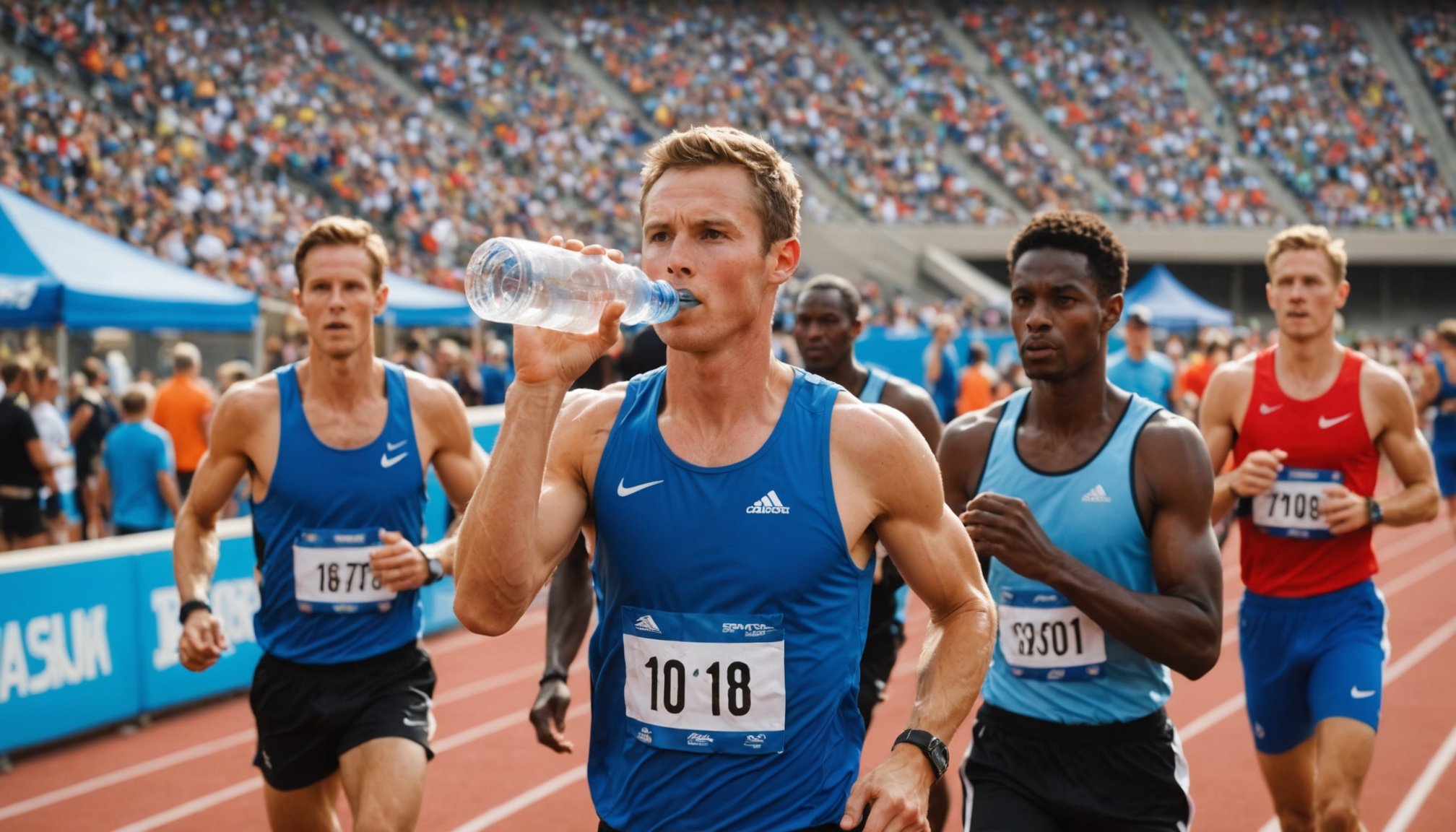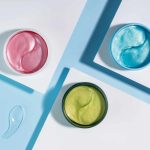Top Strategies to Stay Hydrated and Beat Dehydration at Outdoor Track Events
Staying hydrated is crucial for athletes participating in outdoor track events, especially in hot and humid conditions. Dehydration can lead to severe performance degradation, health issues, and even life-threatening conditions. Here’s a comprehensive guide on how to stay hydrated and avoid dehydration during these events.
Understanding the Importance of Hydration
Hydration is the cornerstone of athletic performance. When you are properly hydrated, your body functions optimally, allowing you to perform at your best. Here’s why hydration is so critical:
Also to read : How can athletes use journaling to track training progress and emotional wellbeing?
How Dehydration Affects Performance
Dehydration can have drastic effects on your body and performance. When you don’t drink enough fluids, your body temperature rises, leading to decreased performance, increased fatigue, and impaired motor skills. Dehydration causes your heart to work harder to pump blood, resulting in an elevated heart rate and rapid breathing. This can also increase the risk of injury due to muscle cramping and hinder recovery by slowing down the process of growing and rebuilding muscle tissues.
The Role of Electrolytes
Electrolytes, such as sodium, potassium, and magnesium, are essential for maintaining fluid balance in the body. During intense exercise, you lose these electrolytes through sweat, which can disrupt your body’s ability to regulate fluids. Replenishing these electrolytes is vital to prevent dehydration and maintain optimal performance.
Have you seen this : How does sports diplomacy play a role in international relations and cultural exchange?
Pre-Exercise Hydration Strategies
Before you step onto the track, it’s essential to ensure you are well-hydrated. Here are some strategies to help you prepare:
Drinking the Right Amounts
Drinking the right amount of water before exercise is crucial. Aim to drink 17-20 ounces of water 2-3 hours before your event, and an additional 8 ounces 20-30 minutes before starting. This helps ensure you are hydrated without feeling bloated or needing to make frequent bathroom stops.
Electrolyte Intake
Electrolytes are just as important as water. If you’re participating in an event like the IRONMAN World Championship in Kona, where the heat is intense, pre-loading with electrolytes in the days leading up to the event can be beneficial. Sophie, an experienced triathlete, recommends drinking electrolytes throughout the week, especially if you tend to get cramps, to dial in those salt levels.
Monitoring Urine Color
A simple yet effective way to check your hydration status is by monitoring the color of your urine. If your urine is pale yellow or clear, you are likely well-hydrated. Dark yellow or amber-colored urine indicates that you need to drink more fluids.
Hydration During Exercise
Staying hydrated during the event is just as important as pre-exercise hydration. Here are some tips to keep you hydrated:
Fluid Intake Guidelines
During exercise, it’s recommended to drink 5 to 8 ounces of fluid every 15 minutes. However, this is just a baseline, and your needs may vary based on factors such as intensity, duration, and weather conditions. Listening to your body and drinking when you feel thirsty is often the best approach.
Using the Right Gear
Carrying liquids with you can be a game-changer, especially on long runs or in events where water stations are sparse. Options include hydration belts, handheld bottles, and hydration packs. These allow for quick and easy access to fluids without disrupting your rhythm.
Cooling Down
In hot weather, cooling down is as important as hydrating. For events like the IRONMAN, picking up an extra water bottle at an aid station to throw over yourself can help lower your body temperature. Using a cap instead of a visor and placing ice or a wet sponge in it can also help keep you cool.
Post-Exercise Hydration
After the event, hydration is still crucial for recovery. Here’s how to ensure you’re replenishing your body’s fluids effectively:
Fluid Replacement
After exercise, aim to drink 16 to 24 ounces of fluid for every pound of body weight lost during the event. This helps replace the fluids and electrolytes lost through sweat. For example, if you lost 2 pounds during the event, you should drink 32 to 48 ounces of fluid.
Balanced Fluid Intake
Avoid the extremes of hydration. Neither under-hydration nor over-hydration is beneficial. Under-hydration leads to dehydration, while over-hydration can cause water toxicity. Balance is key; drink fluids throughout the day rather than chugging water down before or after a workout.
Practical Tips for Staying Hydrated
Here are some practical tips to help you stay hydrated and perform at your best:
Avoid Caffeinated and Alcoholic Beverages
Before a run, it’s best to avoid caffeinated and alcoholic beverages as they can act as diuretics, increasing urine production and leading to dehydration.
Plan Your Run
Plan your run with access to water sources. Knowing where the water stations are can help you stay hydrated without carrying too much weight.
Use Training Runs
Use training runs as an opportunity to learn about your body’s individual hydration needs. This will help you tailor your hydration strategy for the actual event.
Detailed Hydration Plan
Here is a detailed hydration plan you can follow:
| Time | Hydration Strategy |
|---|---|
| 2-3 hours before exercise | Drink 17-20 ounces of water |
| 20-30 minutes before exercise | Drink 8 ounces of water |
| During exercise | Drink 5 to 8 ounces every 15 minutes |
| During hot weather | Use cooling methods like throwing water over yourself and using ice or wet sponges |
| After exercise | Drink 16 to 24 ounces of fluid for every pound of body weight lost |
| Throughout the day | Drink fluids regularly to maintain fluid balance |
Common Hydration Mistakes to Avoid
Here are some common hydration mistakes athletes make and how to avoid them:
- Under-hydration: Starting in a deficit state can lead to bonking and dehydration. Ensure you drink enough fluids before and during exercise.
- Over-hydration: Drinking too much water can flush out needed electrolyte minerals and cause water toxicity. Listen to your body and drink when you feel thirsty.
- Ignoring Sodium Intake: Sodium is crucial for maintaining fluid balance. Replenish sodium loss with electrolytes and sports drinks.
- Relying Solely on Energy Gels: Energy gels lack sufficient sodium levels to maintain fluid balance. Use them in moderation and supplement with other hydration methods.
Quotes from Experts
- “You just have to start walking. And then it’s about getting the fluids in and cooling yourself down as much as possible. Dunk your head in water, grab the ice and just walk – or rest – until you start to feel better,” – Sophie, experienced triathlete.
- “Make sure you are drinking a lot of water the night before the race to make sure you are hydrated ahead of time,” – Noah Poses, chef and nutrition expert.
Staying hydrated is a multifaceted process that requires careful planning and execution. By understanding the importance of hydration, implementing pre-exercise, during-exercise, and post-exercise hydration strategies, and avoiding common hydration mistakes, you can optimize your performance and ensure your safety during outdoor track events.
Remember, hydration is not just about drinking water; it’s about maintaining a balance of fluids and electrolytes that your body needs to function optimally. By following these strategies and listening to your body, you can stay hydrated, beat dehydration, and achieve your best performance.











